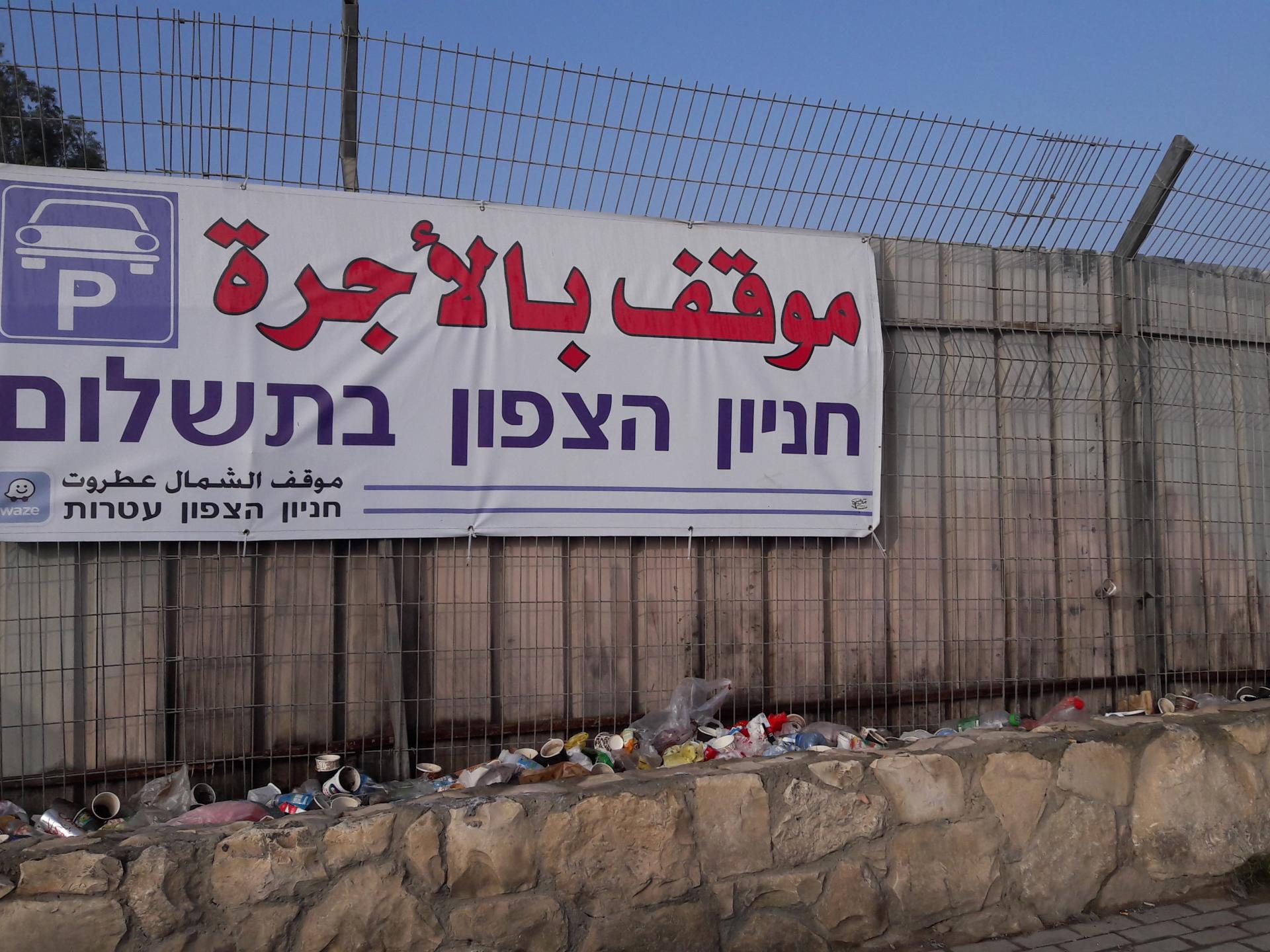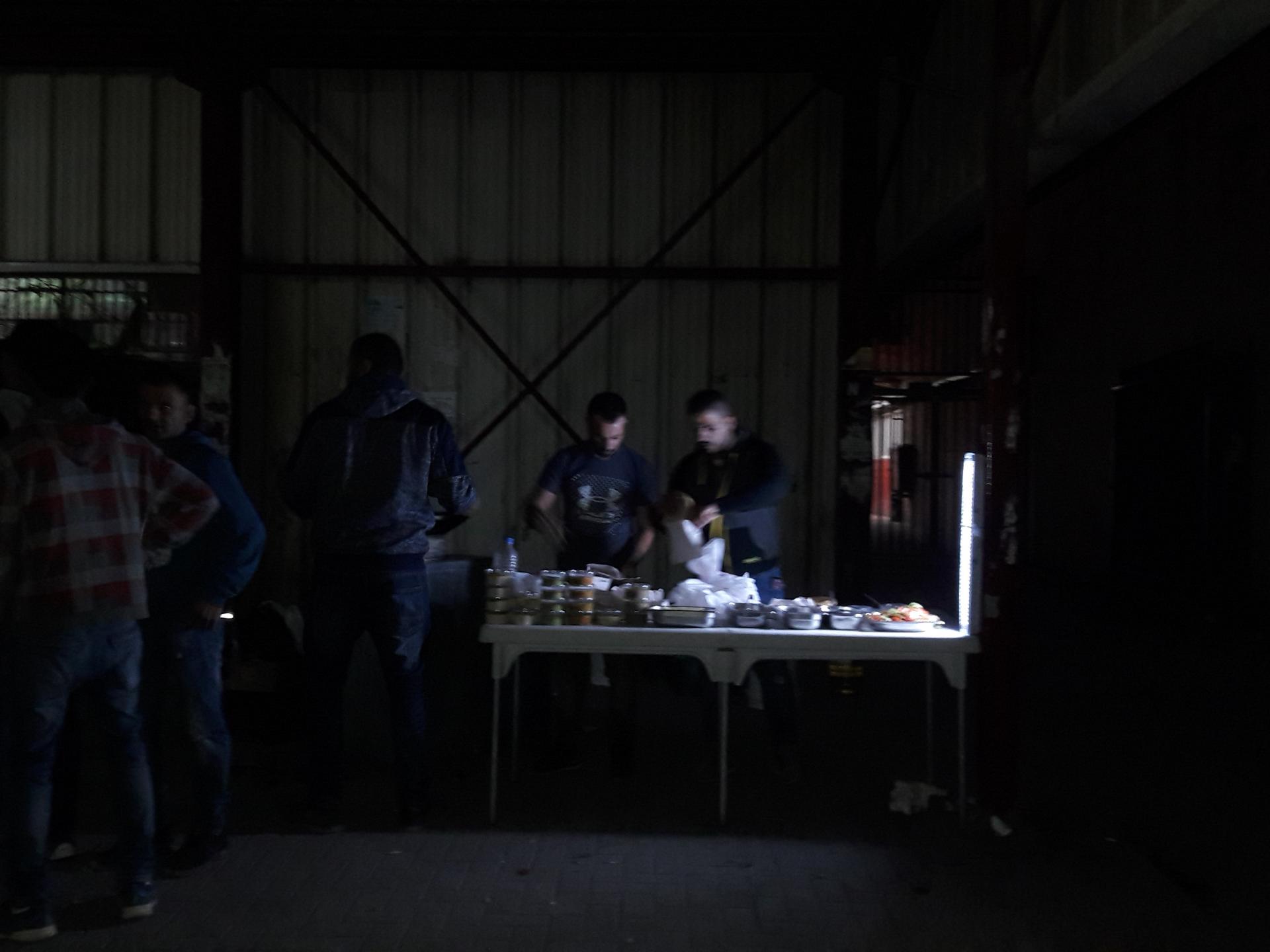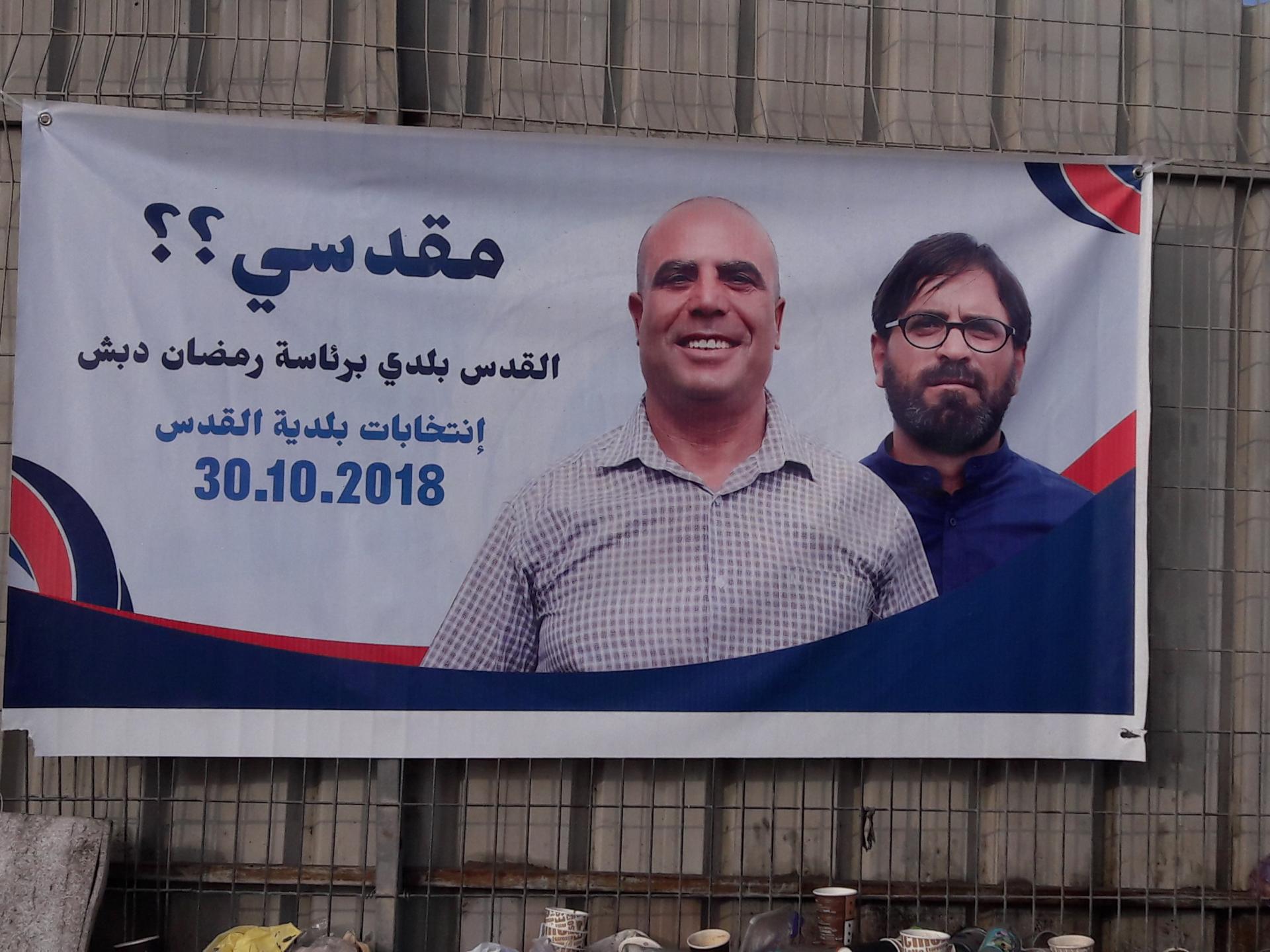The collapse of queues and the most difficult morning at Qalandiya checkpoint
05.35. We arrived a little later than ususal. Posters announce the opening of a new carpark in the area next to the café attached to the existing carpark. At this hour it is still closed.

Even in the dark it was possible to see that the area had been cleaned – perhaps in honour of the forthcoming elections? But as we approached the Palestinian side we could already hear from afar the sounds that warned us of imminent collapse of queues, and people we met told us that the situation was bad. When we entered the shed we saw the usual unhappy sight of piles of people at the entrance to the three cages, and benches full of people who had withdrawn from the melee. Every time the turnstiles opened there was shouting and pushing. At the side was the new falafel stall, now installed inside the shed near the cages, possibly in preparation for the coming winter.

The beigel seller was in his usual place in the shed and the kiosk outside was open.
When we arrived, there was already a policeman present, but did not do anything at this stage. Four checking stations, and later five, were open.
A young man told us that last week he was beaten by security guards and he wanted to complain about them and the policemen. He decided not ot do so after seeing on you-tube films about policemen who had struck Jews whose complaints did not help. If it didn’t help them, he would give up in advance. He has something to lose … He says everyone hopes that when the new section of the checkpoint opens the passage will be automatic, as it is (according to him) in Na’alin. After fingerprint check, the gate opens automatically. No need of soldiers who are busy with smartphones, or who go out for long breaks. (Later we read in our colleague Ina’s report that this is what is expected here. Here’s hoping…)
After 6 o’clock there were already many people at the humanitarian gate. When a guard arrives, he and the policeman began to operate the gate. Later a D.C.O officer arrived. They allowed batches of people through, until there was no queue. Now anyone who arrived and was entitled – mainly women with permits – went through.
Meanwhile we went outside to show our visitor the traffic checkpoint and surroundings. When we returned there was still chaos, but gradually queues began to form. After 7 o’clock there were already queues, but long ones. Towards 8, they became shorter and we joined one. The D.C.O. soldier shut the humanitarian gate without allowing in older folk who can enter at 8 without permits. But after a few minutes when children or sick elderly arrived, the policeman and guard once again opened the gate, and then the other older folk could pass, too. This happened a few times until we reached the checking stations.
Although the lines became shorter, it took us 45 minutes to pass and it was 8.30 before we were outside. Now we could see on the opposite side a sign about the parking lot, and next to it a poster about the Arab list for the municipal elections, We asked people sitting there if there had been any response, and they said there had been. Apparently there has been relatively more participation in east Jerusalem (yet still a tiny proportion of those with voting rights).

As it was late, we were caught in peak-time traffic jams. Thus returning to town also was slower than usual.
